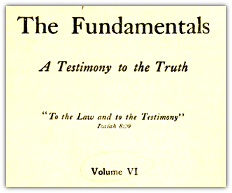Not Separating What God Has Joined Together - Aphorisms for Thinking about Separation
Please, consider reading all of the preceding articles before delving into this one. While I’ve tried to make them each stand alone, they are linked together.
Aphorism 4: None of the commands of Scripture contradict the other commands when rightly understood, and to be correctly applied and interpreted all of the commands of Scripture must work together.
Eight hundred feet below the surface of the water, in a cramped nuclear submarine armed with ballistic missiles, my friend and newly minted lieutenant felt like he was faced with an impossible decision. On Sunday morning would he meet and worship with the dozen or so sailors on the boat that professed Christ but belonged to compromised groups (American Baptist, United Methodist, etc.) or quietly pray by himself in his bunk? Would he “be separate” (ESV, 2 Cor. 6:17) or neglect “to meet together” (Heb. 10:25)? Would he “[b]ear one another’s burdens” (Gal. 6:2) or would he “[p]urge the evil person” (1 Cor. 5:13)?

 (
(
Discussion